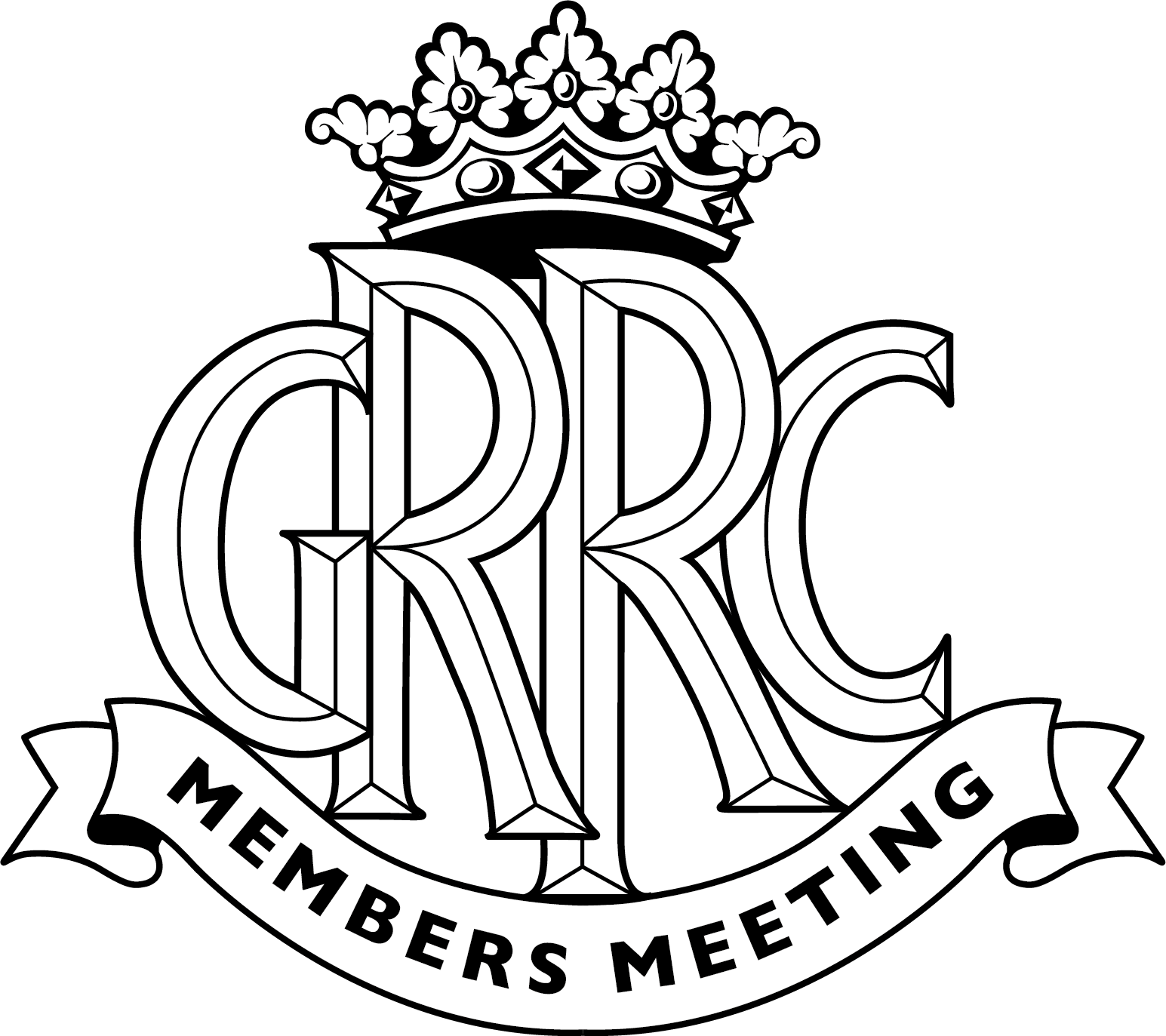Doug Nye: What was the Glover Trophy?
 Doug Nye
Doug Nye
One of the most popular feature events of the annual Goodwood Revival programme has always been the Glover Trophy race for Formula 1 cars. It caters for the ‘Swiss-watch’ 1.5-litre F1 cars of 1961-65, the pinnacle years of the Goodwood Motor Circuit’s frontline career and the race which saw Stirling Moss, Graham Hill, Jim Clark, Jackie Stewart, Lotus and BRM truly excel upon the Sussex circuit.

The early background to the Glover Trophy itself was described in the event programme for Goodwood’s Whit-Saturday race meeting, which took place on May 27, 1950. Actually, the article was headed ‘The 500 International Trophy’ and it read as follows:
“Enterprise and organisation being among the chief characteristics for which the British Automobile Racing Club is famed, the Club takes pride in presenting, as the main feature of today’s meeting, the first ‘500 International Trophy’, the greatest Formula 3 event yet staged in Europe.
“As the manufacture and performance of 500cc cars has improved, and their popularity increased, a growing need has been felt for a truly international event worthy of them, In answering this need, the BARC hopes to establish today’s race as the ‘Blue Riband’ of European Formula 3 racing, and when we speak of our own enterprise we must also – and without loss of time – pay full and complete acknowledgement to the enterprise, and generosity, of D.M. Glover, Esq, of United Lubricants Ltd, who has undertaken entire responsibility for the prize money, totalling £500, which is offered for the race.
“Mr Glover is a real enthusiast for the 500cc movement, and when enthusiasm is coupled with such practical support neither the BARC nor the many followers of small car racing will be tardy in offering their thanks and appreciation to him.

The Goodwood programme spread introducing Dan Glover of United Lubricants Limited - and his International Trophy…
"The prize money is greatly in excess of anything previously given for a 500cc race, and the lucky winner will also receive the ‘Glover’ Challenge Trophy and replica. As an interesting link with early BARC (or JCC) history, the famous Andre Challenge Trophy, originally awarded for the 200 Miles Race in 1921 (a small car race), will also be held, for one year, by the winner of the first 500 International Trophy.
“The rolling start (or Indianapolis start) was introduced to Britain by this Club and was used for the famous series of International Trophy races [at Brooklands] prior to the war.
"This form of art is now a requirement under International rules, for Formula 3 racing.
“Competitors in both Heats and Final, must maintain their grid positions during th pilot lap for the rolling start.
“The actual flag start signal will be given from the pilot car when, during the pilot lap, the car reaches a point approximately 150 yards in advance of the normal (grid) starting line (i.e. by the old starting line near the present Paddock ‘In’ get). This procedure is being adopted in order to minimise, as far as possible, ‘bunching’ at the first corner.
“The race (Heat or Final) will be deemed to have started when the flag signal is given from the pilot car, and the race will be timed from that moment.
“The normal finish line (opposite the Paddock tower) will be used for all 500cc and other races.
“No repairs, refuelling or adjustments are allowed during the Heats or Final. Once the competitor is out, he is out!
“Competitors with the best twenty times will be drawn from the Heat, and will form the field for the Final.

And here’s the race programme depiction of the Glover Trophy itself…
“Starting grid positions for the Heats will be decided by ballot. Starting grid positions for the Final will be based on times set up in the Heats, eg the competitor with the best time will have No. 1 position on the grid.
“The pilot car is supplied by - and driven by - Mr Sidney H. Allard.
Prizes to the first three in the Final will be awarded immediately the race has concluded. The full list of prizes is as follows:
First Each Heat £20 Final £200
Second Each Heat £15 Final £100
Third Each Heat £10 Final £50
Fourth - Final £30
Fifth - Final £20
Sixth - Final £10”
Predictably such contemporarily lavish cash prizes attracted a healthy 40 entries backed up by eight accepted reserve entries. For the first time a team of foreign-built racing cars was fielded at the Motor Circuit, these being the Effyhs which sailed in via North Sea ferry from Sweden to be driven by Age Jonsson, Eiler Svensson and Nils Gagner – only to be beset by terrible spark plug problems in their JAP engines. These distinctively tubby, chubby Swedish cars attracted tremendous attention in the paddock, not least because they featured both substantial roll-over bars behind the driver’s head when seated but also seat belts to hold him in place in the event of an accident. Both features were mandatory under contemporary Swedish racing rules but were regarding as sissy in the extreme by the gung-ho, handlebar-moustached, largely ex-RAF British racing fraternity studying them so critically.
On that late-May Saturday afternoon, Syd Allard in his Allard J2 led the field around on the rolling-start lap and from flag fall of the 7-lap Heat 1 it was Paul Emery’s Emeryson-JAP which rushed into an immediate 200-yard lead… only to splutter into silence with another plug problem. Eric Brandon then emerged as Heat leader in his works Cooper-JAP who ran home to win from teenager Peter Collins in his customer Cooper Mark III with rare (and expensive) Norton engine, second, and industrialist Dennis Moore - in his first 500cc Formula 3 race – in Ken Steadman’s Parsenn-JAP.

Paddock layout as on Whit-Saturday, May 27, 1950 - the 500cc cars were placed in shelters 1-49 - over 500cc entries for the other races in stalls 51-90…
Heat 2 followed, with Don Parker’s Parker Special-JAP the initial leader until overwhelmed by the Cooper-Nortons of Bill Whitehouse and ‘Curly’ Dryden, the latter running out the winner. This Heat was notable for a titanic battle for fourth place which raged between Eric Winterbottom, Ken Wharton and Lionel Leonard - the first in a Cooper-Vincent, the later pair in Cooper-JAPs - only for all three to be overtaken on the last lap by Wing-Commander Frank Aikens’s Jimmy Richmond-entered Iota-Triumph which clamoured past as they were intent upon fighting off one another…
And so to the 15-lap Final, which starred eventual winner ‘Curly’ Dryden who prevailed after a great dice with Peter Collins and Eric Brandon. Don Parker went off into the standing crops at Woodcote on the opening lap, and clouted Leonard’s Cooper on his way back onto the tarmac. The unfortunate constructor of the Leonard-MG sports cars had his car overturn on top of him, and he was carted off to hospital with broken ribs and collar bone. Brandon’s works Cooper lost a lap in the pits having a carburettor problem corrected. ‘Big Bill’ Whitehouse ran their ahed of Poore and Aikens, until lap 12 when the former retired at Madgwick. Aikens’s front suspension appeared to be disintegrating and he was black-flagged, but simply ignored the signal and raced on – waving reassuringly at the marshals. Dennis Poore’s Parsenn then shed its exhaust pipe and the flame issuing from its exhaust port ignited the fuel tank as he rattled past the pits. Fortunately he was able to swerve into the paddock where the cheery blaze was quickly doused.

Dan Glover and his wife (left) with Stirling Moss (far right) and Stirling’s business manager and Secretary of the 500 Club at the time, Ken Gregory…Stirling having just won the 1951 edition of the Glover Trophy in his 500cc Formula 3 Kieft…
Peter Collins chased ‘Curly’ Dryden – so nicknamed in wartime RAF service because he was completely bald – every inch of the way but was just unable to find a way by, and the pair finished with Dryden the winner by six-tenths of a second across the line… and instantly £200 better off for his trouble – which would be more than £3,100 by 2017 values…
Evidently, Dan Glover of United Lubricants Ltd enjoyed his experience of race sponsorship and he would subsequently become a regular supporter of the BARC’s major Goodwood race meetings – his trophy assuming title rights for the Easter Meeting Formula 1 race from 1956-1963. But it had all begun with that first big 500cc International back in 1950.
Photography courtesy of The GP Library.
Doug Nye
Glover Trophy
F1
Single Seater
































































